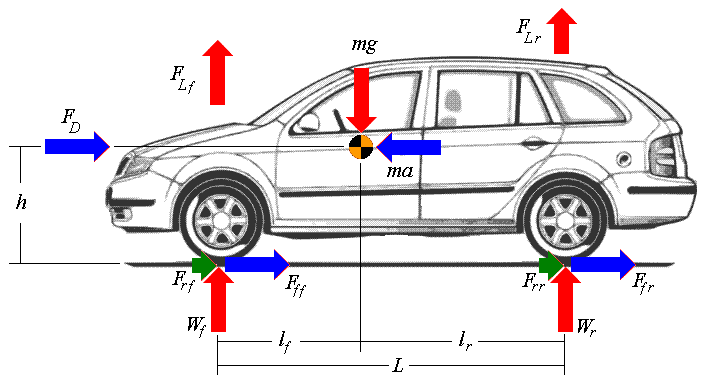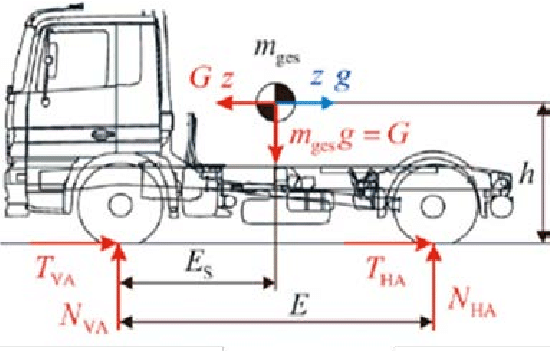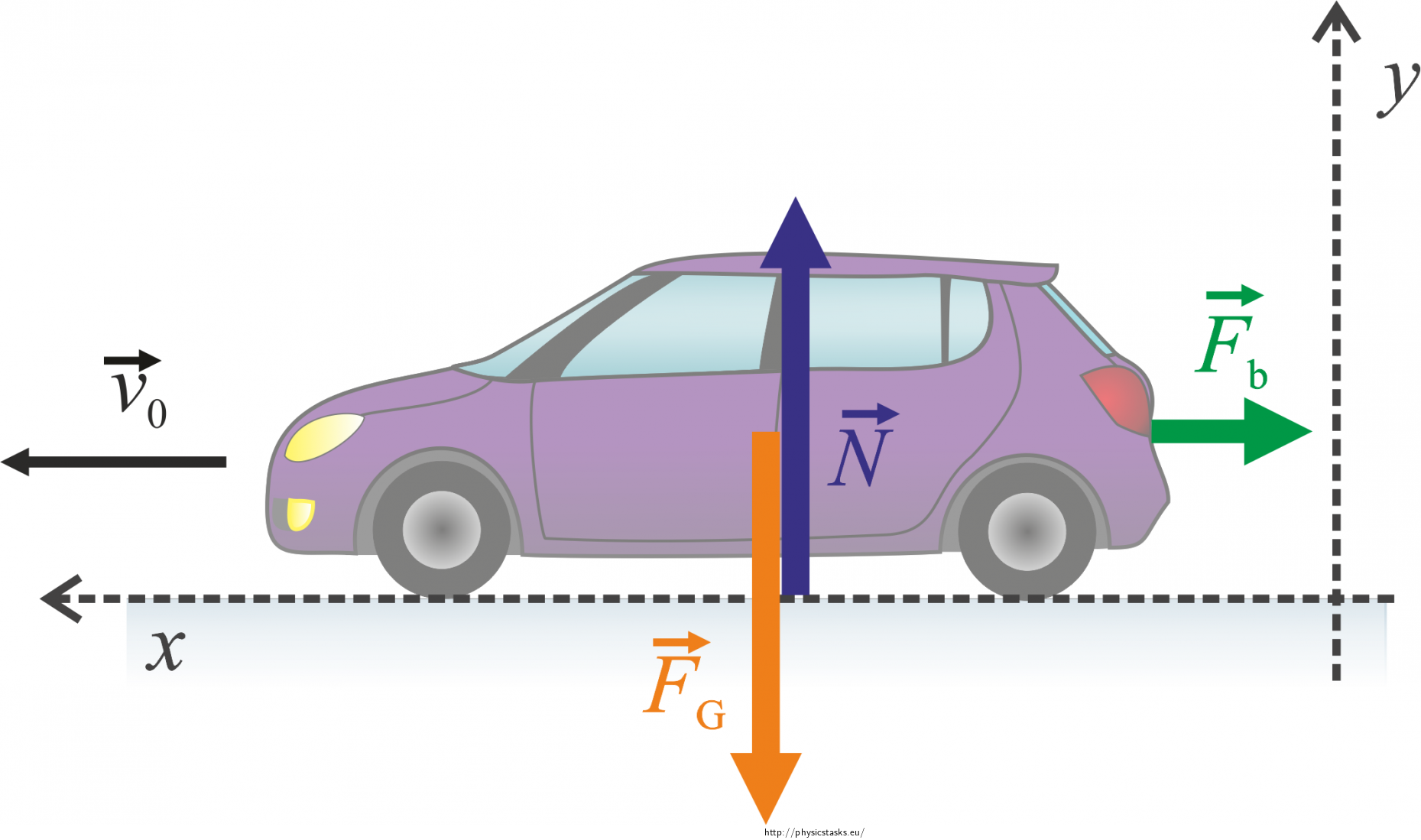To calculate braking force, use the formula: braking force (Fₙ) equals the coefficient of friction (μ) multiplied by the normal force (Fₙ). First, find the coefficient of friction for the surfaces in contact. Determine the normal force by multiplying the object’s mass (m) by the acceleration due to gravity (g), roughly 9.8 m/s². Then, apply the formula Fₙ = μ × Fₙ. Multiply μ by the normal force to get the braking force. This straightforward method provides a basic understanding of how to calculate braking force in scenarios involving friction between surfaces.
What Are the Fundamentals of Braking Force in Physics and Engineering?

In physics and engineering, braking force is key to how vehicles stop, generated by brakes to slow down or halt motion.
What Braking Force Is
Braking force is the mechanism by which motion is countered and objects are brought to a stop. It is a reactive force exerted by a surface in contact with a moving object, opposing the direction of its motion.
In the context of a car, for instance, braking force is what allows the vehicle to slow down or come to a complete halt when the brakes are applied. This force arises from the interaction of materials, typically the friction between brake pads and a rotor or the friction between a tire and the road surface.
Importance in Physics and Engineering
The significance of braking force in physics is deeply rooted in Newton’s laws. Newton’s third law, which asserts that every action has an equal and opposite reaction, is particularly relevant.
When a vehicle applies brakes, the tires exert a braking force on the road, and in return, the road exerts an equal and opposite force on the tires. This principle underlines the fundamental physics of motion and reaction.
In engineering, the understanding of braking force is vital in designing systems that ensure safety, efficiency, and optimal performance.
For example, in the design of a car’s braking system, engineers must consider factors like the coefficient of friction between brake components, the weight distribution of the vehicle, and the heat generated during braking.
Failure to grasp and manipulate braking force appropriately can lead to issues such as brake fade, reduced stopping power, and increased wear and tear.
Units of Measurement for Braking Force
The standard unit for force is the newton (N) in the International System of Units (SI). Therefore, braking force is quantified in newtons. This unit allows for precise measurement and comparison across different systems and applications.
When engineers calculate braking force, they ensure that the force generated by the braking system falls within the desired range for effective and safe operation.
However, consistent use of standardized units is necessary for collaboration and communication within the engineering and physics communities, enabling clear and accurate representation of braking forces in various scenarios.
What Is the Formula of The Braking Force?
The braking force formula is like revealing the mathematical code behind how objects come to a stop. The formula Fbrake=μ×Fnormal , is the cornerstone of comprehending braking dynamics. This equation connects the braking force (Fbrake) to the coefficient of friction (μ) and the normal force (Fnormal). It’s not just a formula; it’s a key that unlocks the understanding of the complex interplay between forces when an object decelerates.
Breakdown of Each Variable in the Formula
- Braking Force (Fbrake): This is the force that acts against the motion of an object, causing it to slow down or come to a stop. It relies on the coefficient of friction and the normal force.
- Coefficient of Friction (μ): This dimensionless value describes how much two surfaces in contact resist sliding against each other. A higher coefficient indicates more significant friction, affecting the overall braking force.
- Normal Force (Fnormal): This force acts perpendicular to the surface, providing insights into the object’s weight on that surface. For a horizontal surface, Fnormal is equal to the object’s weight (mass × gravity).
How To Calculate Braking Force? Step-by-Step Guide

Collecting Necessary Data
First of all, it’s essential to gather pertinent data. Start by identifying the coefficient of friction (μ) relevant to the surfaces in contact. This value can often be found in reference tables or materials documentation and characterizes how much the surfaces resist sliding against each other.
Next, determine the normal force (Fnormal), a force acting perpendicular to the surface and providing insights into the object’s weight on that surface. On a horizontal surface, Fnormalis essentially the object’s weight, calculated as the product of its mass and the acceleration due to gravity.
Additionally, consider environmental factors, such as surface conditions, which can significantly influence friction and subsequently impact the braking force.
Plugging Values into the Formula
With the necessary data in hand, it’s time to apply the braking force formula
Fbrake=μ×Fnormal
Substitute the collected values for μ and Fnormal into the formula. It’s imperative to maintain consistency in units throughout this process to avoid any potential calculation errors.
This step essentially translates real-world factors, represented by the coefficient of friction and normal force, into a mathematical equation. It lays the groundwork for a precise and quantitative representation of the forces involved in the braking process.
Solving for Braking Force
Once the values are plugged in, perform the arithmetic to calculate the braking force (Fbrake). Multiply the coefficient of friction (μ) by the normal force (Fnormal). The resulting value represents the force required to decelerate or bring the object to a complete stop.
The implications of the calculated braking force are vital. A higher braking force implies more effective braking, potentially ensuring a quicker stop.
On the other hand, a lower force may indicate challenges in slowing down the object, prompting a closer examination of the braking system or surface conditions.
FAQ
What is braking force in physics?
In physics, braking force is the resistance force that slows down or stops the motion of an object. It is determined by factors such as the coefficient of friction and the normal force.
How do you calculate braking and stopping distance?
Braking and stopping distance involve considering the initial speed, coefficient of friction, and reaction time. The total distance is the sum of the thinking distance and braking distance.
What is the braking distance at 50 km/h?
The braking distance at 50 km/h depends on factors like reaction time, road conditions, and vehicle characteristics. It is determined through the application of braking force to decelerate and stop the vehicle.
What is the total braking distance?
The total braking distance is the sum of the thinking distance and the braking distance. It encompasses the distance traveled during the driver’s reaction time and the distance covered while the brakes bring the vehicle to a stop.
What is the braking distance?
The braking distance is the distance a vehicle travels from the moment the brakes are applied until it comes to a complete stop. It includes the effects of the braking force on the vehicle’s motion.
Final words
Figuring out braking force is as simple as using the formula Fbrake=μ×Fnormal . By gathering data on friction and the normal force, plugging in the numbers, and doing the math, you can find the force needed to slow down or stop something. This method is a practical tool for engineers and physicists, helping analyze and improve braking systems.
Whether you’re dealing with car brakes or studying physics, mastering this calculation is essential for enhancing safety and efficiency in motion.



